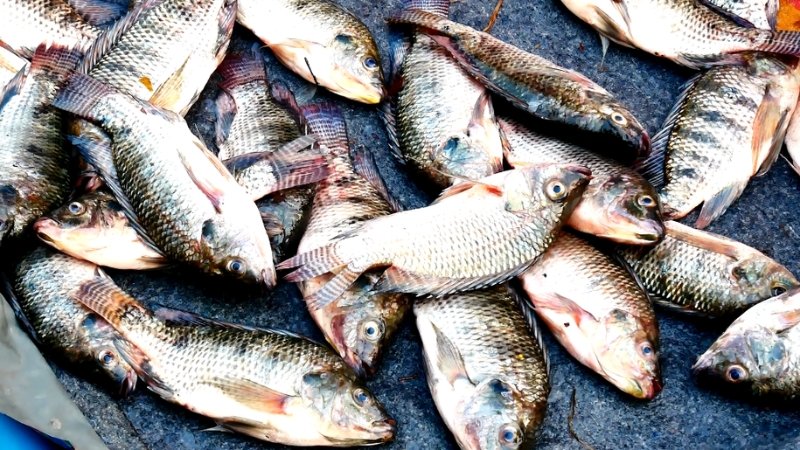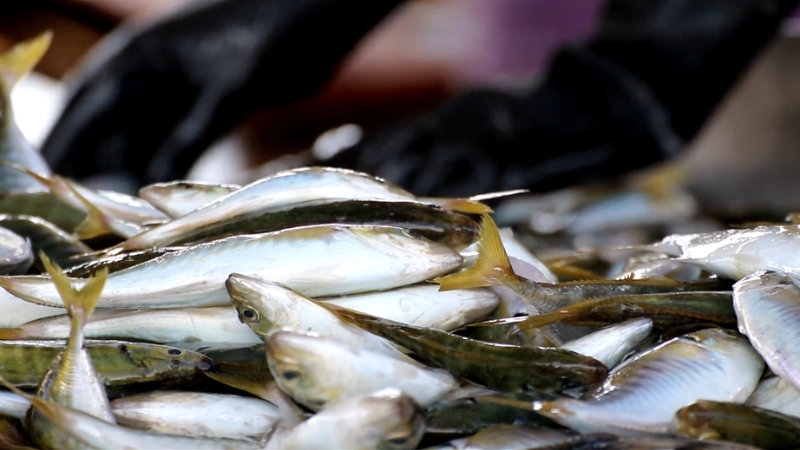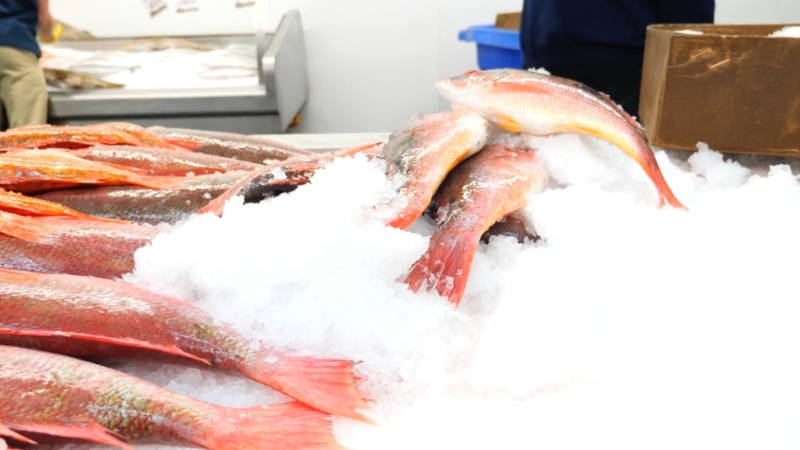Fish quality begins to degrade within minutes of leaving the water. The only fool-proof way to arrive home with sashimi-grade fillets is to chill the core temperature of the catch below 4 °C in the first hour and keep it there until processing.
Failure usually boils down to ten avoidable missteps: poor bleeding, warm ice, melted slush, air gaps inside coolers, bacterial cross-contamination, sun exposure, sub-par insulation, unmanaged brine levels, excessive movement, and long transit without an active cooling source.
Fixing these points preserves texture, slows enzymatic spoilage, and cuts histamine risk, turning “fishy” dinners into restaurant-quality meals every time.
At-Boat Handling Mistakes

Mistake #1
Description
Rapid-Fix Guideline
Skipping the bleed-out
Leaving blood in capillaries accelerates microbial growth and off-flavors
Slice gill arches immediately; bleed in flowing water 2–3 min
Gaffing through flesh
Muscle punctures leak myoglobin and attract bacteria
Gaff in the head or jaw only, or net the fish instead
Why this matters: Blood is rich in iron and serves as rocket fuel for spoilage bacteria. A clean bleed reduces bacterial counts by up to 90 % and prevents that metallic flavor common in poorly handled fish. Likewise, puncturing the loin creates channels for microbes. Professional crews gaff in the lower jaw or stun and net, then bleed and ice within five minutes.
Mistake #2
Description
Rapid-Fix Guideline
Using warm “ice” blocks
Commercial block ice starts around –2 °C; grocery ice is often 0 °C or warmer
Buy or make saltwater slurry ice (3 % brine) at –5 °C
Why temperature precision matters: Plain freshwater ice gives a false sense of security. Because its melting point is 0 °C, any fish resting directly on cubes hovers right at the bacterial danger line. A salt slurry drops the contact temperature several degrees lower without freezing the flesh solid, extending shelf life by 24 – 48 hours.
Cooler Loading & Transit Errors
@cheflifestyle_ Recent questions on my mind. I know I’m not the only one that want answers to the questions. I would love to learn an d know more. If you have any ideas let me hear you in the comments. . Also between fish, chicken, mushrooms and beef which one are you likely to go for? I’m a fish person on any day! Can you identify any of the fishes in the video? . . . . #fish #fishharvesting #fishing #fishtransportation ♬ original sound – Cheflifestyle | Bibiana Gyasi
Mistake #3
Description
Correct Practice
Air pockets around fish
Warm air circulates; the top layers spoil first
Layer fish and slurry ice in 1 – 2 cm strata; fill gaps with crushed ice
Mistake #4
Description
Correct Practice
Direct sun on the cooler lid
Radiant heat melts ice twice as fast
Drape a reflective tarp or stow a cooler under deck shade
Physics in play: Every liter of melted ice absorbs 80 kcal of heat. Air voids erase that advantage by trapping warm pockets, while radiant sun can add 200 W m² of heat to the lid surface. Tight packing and shade management together can reduce melt rate by 40 %, meaning less pooling water and fewer quality losses on a full-day run.
Cross-Contamination & Movement
| Mistake #5 | Description | Prevention Step |
| Raw fish touching deck slime, bait, or drink cans | Pathogenic bacteria hop surfaces fast | Separate cooler: one for catch, one for drinks/bait |
Mistake #6
Description
Prevention Step
Excess sloshing during tow or drive
Bruised flesh, broken skin
Wedge coolers with foam blocks; fill to 90 % with ice slush to limit movement
Long-haul transport means vibration, potholes, and wave slap. Bruising ruptures cell walls, releasing enzymes that turn firm fillets mushy. Filling coolers nearly full of slurry immobilizes fish and cushions fillets.
Modern road trips sometimes span 12 hours to reach a processor or hometown kitchen—long enough for even the best ice strategy to fail. A portable freezer rental for fishing, typically a 12-volt compressor unit capable of –20 °C, creates an active cold chain.
Rental units plug into a boat’s DC system or a car’s cigarette socket, hold 60–90 L of product, and cycle only 3–5 amps once chilled.
Many operators rent them by the weekend, providing pre-trip delivery, tie-down brackets, and digital thermostats. Sliding gutted fish into vacuum bags, then stacking them in a –10 °C portable freezer, essentially pauses time; histamine-producing bacteria stop multiplying, and you reach home with sushi-safe flesh—even after multi-state hauls.
Ice Management & Brining
View this post on Instagram
Mistake #7
Description
Best Practice
Letting meltwater dilute brine
Warmer mix + bacterial bloom
Drain half-melted water every 2 hours; top up with new slurry
Mistake #8
Description
Best Practice
No separation layer in the cooler
Fish skin contacts meltwater, picking up microbes
Use a food-grade drain tray so the fish rest above the brine while still chilled
When transporting your catch on ice, few things cause spoilage faster than ignoring the state of your brine. As ice melts, it creates freshwater that gradually warms and dilutes the cooling power of your salt slurry.
This slightly warmer water—often hovering around 2 °C—can support rapid bacterial growth, especially if fish slime, scales, or bait residue are present. Meltwater at just a few degrees above freezing can harbor ten times more bacteria than a colder, well-salted 2 °C brine solution.
Once microbial activity begins, it doesn’t stop. Proteins begin to break down, resulting in soft textures, sour odors, and the irreversible loss of that just-caught taste.
The fix is simple but time-sensitive: drain off half-melted water every two hours and top up with fresh ice or slush. This resets the temperature and slows microbial growth. Better yet, use a cooler with a drainage valve and a dedicated fish tray to ensure fluids don’t pool around the fillets.
Active ice management isn’t just for offshore charters—it’s the only way to preserve your catch during long hauls back to shore or overnight storage.
Post-Landing Mistakes

Mistake #9
Description
Solution
Delay from dock to fillet table
Bacterial rebound, slime layer hardens
Fillet within 2 hours or keep in active cooling until cut
Mistake #10
Description
Solution
Vacuum sealing warm fillets
Condensation, freezer burn
Chill fillets to ≤2 °C before sealing and freezing
Many anglers make the mistake of tossing fish directly onto loose ice or brine with no separation. While this seems like a good way to keep fish cold, the continuous contact with meltwater allows microbial exchange and physical damage to the skin.
The fish may look fine on the outside, but can develop waterlogging and soft, mushy spots within hours. Meltwater carries bacteria, fish slime, and blood proteins that accelerate decomposition, especially in high-value species like yellowtail or sea bass.
The best way to avoid this is by using a food-grade separation tray or a fish bag with mesh support that allows cold air and brine to circulate without letting the fish soak.
This method is widely used in professional fisheries and can be easily adopted with gear like cooler trays, rack inserts, or even DIY grates. You still get the full thermal benefit of the brine, but with the fish held just above the fluid, staying cold, dry-skinned, and firm.
If you’re using a portable freezer rental for fishing, some models come equipped with internal baskets that serve this exact purpose, keeping fish elevated and untouched by runoff.
Conclusion
@greenfishsa 🌊 Old school is cool 💦 Using the leaves of kelp that we found drifting on the surface after the storm, in conjunction with our ice, to keep our catch cool and out of direct sunlight, ensuring we bring you only the best quality. As custodians of the ocean, looking after our prized catch is always our first priority, to honour and respect the fish we have harvested. 🐟Nature’s way of providing is truly the best.🐟 #greenfishsa #yellowtail #sustainablefishing #oceanconservation #traditionalmethods #respecttheocean #naturelovers #fishinglife #oldschoolcool #freshcatch #fyp ♬ original sound – greenfishsa
Fresh-caught fish deserve pro-level care from hook to kitchen. Bleed and chill immediately, use sub-zero slurry ice, keep coolers shaded and packed tight, drain meltwater often, and isolate your catch from deck grime and vibration bruises.
For drives longer than the ice can handle, an energy-efficient portable freezer closes the gap and delivers premium quality at the table. Master these ten checkpoints and every fillet you land will taste as if it jumped from the ocean straight onto your plate—no fishy smell, no mushy texture, just pristine flavor.

